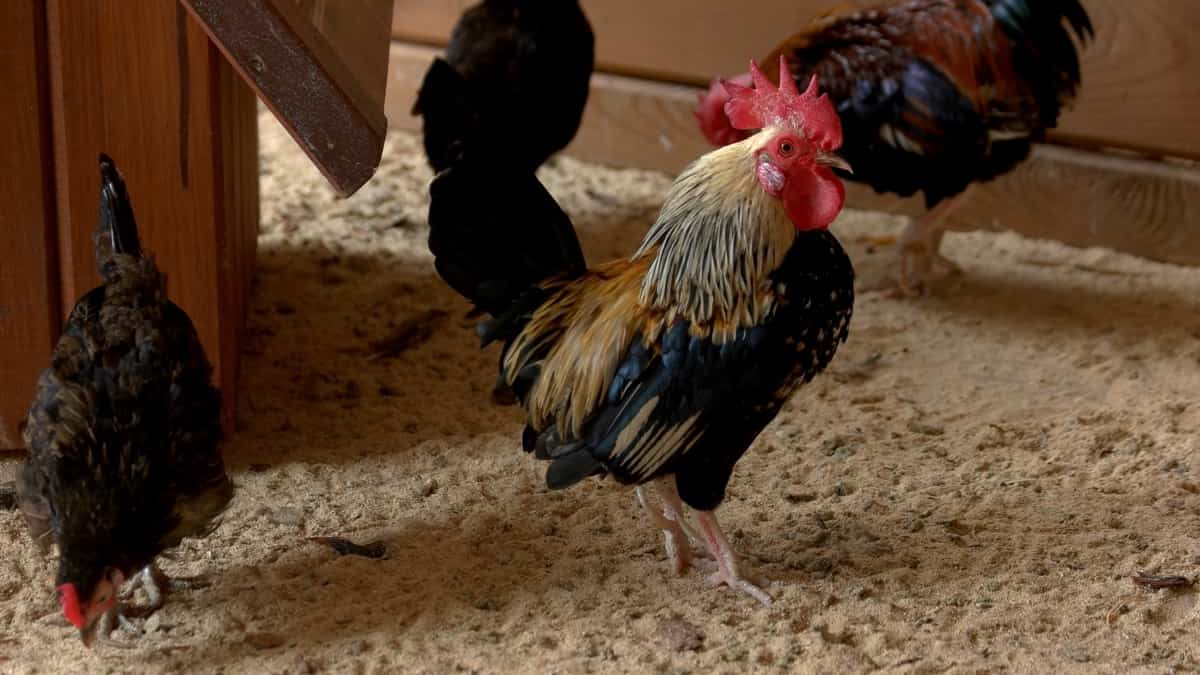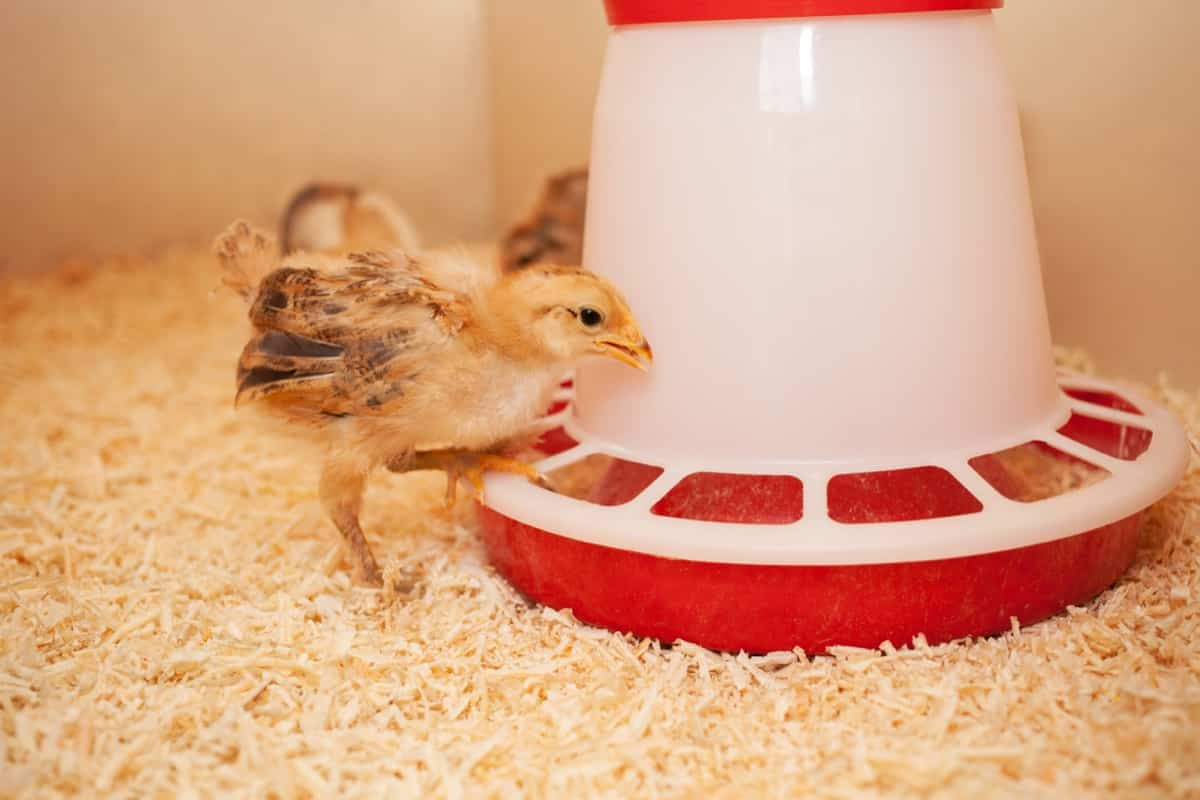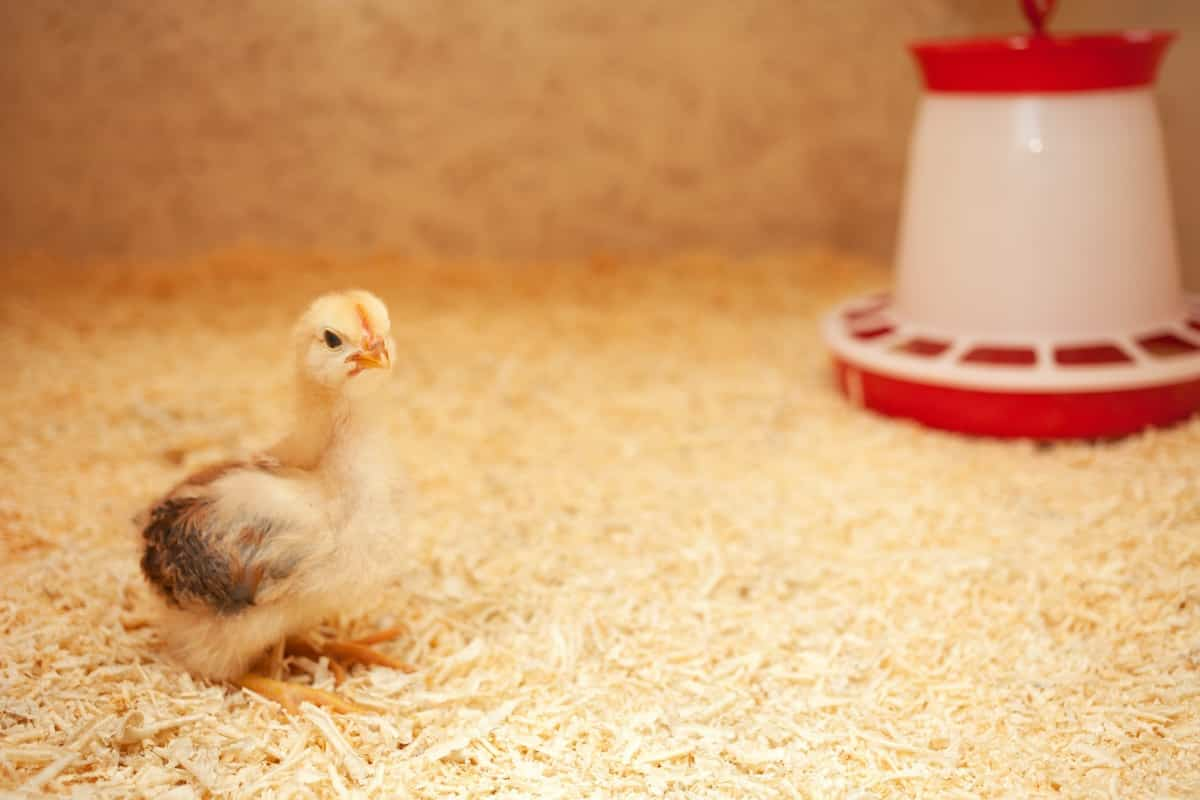The deep litter method is a popular and effective way of managing waste in chicken coops. Rather than constantly cleaning out the chicken coop, this method involves adding new bedding material to the existing litter, allowing it to decompose naturally over time. This creates a more natural and healthy environment for the chickens while also reducing the amount of waste that needs to be removed. This guide will explore how to use chicken coop deep littering. Also, the benefits of implementing it in your chicken coop.

Benefits of Implementing the Deep Litter Method in Your Chicken Coop
Implementing the deep litter method in your chicken coop offers several benefits. Firstly, it helps to control odors by allowing the natural decomposition process to occur. The layers of bedding material prevent the buildup of ammonia and other strong odors, creating a more pleasant environment for the chickens and their keepers.
Additionally, the deep litter method helps to regulate moisture levels in the coop. The bedding material absorbs and retains moisture, keeping the coop drier and reducing the risk of bacterial and fungal growth. The decomposition process also generates heat, which can help keep the coop warm during colder months. Lastly, the deep litter method saves time and effort in coop maintenance, as there is no need for frequent cleanouts. Instead, the litter can be periodically turned over and topped up with fresh bedding material.
Chicken Coop Deep Littering: A Step-by-Step Guide
Choosing the Right Bedding Material for the Deep Litter Method
When selecting a bedding material for the deep litter method, there are a few factors to consider. Firstly, choose a material that is absorbent and capable of holding moisture. Straw and wood shavings are popular choices due to their absorbency and availability.
In case you missed it: 11 Must Haves For First-Time Beginner Chicken Owners: Checklist for Chicken Coop

Additionally, consider the availability and cost of the bedding material and its suitability for decomposition. Avoid materials that may contain harmful substances or are slow to decompose. Ultimately, choose a bedding material that is safe, comfortable, and promotes the natural decomposition process in your chicken coop.
Maintaining and Managing the Deep Litter System in Your Chicken Coop
It is important to follow a few key steps to maintain the deep litter system in your chicken coop. First, start by spreading a layer of bedding material on the coop floor, such as straw, wood shavings, or dried leaves. As the chickens go about their daily activities, they naturally scratch and mix the bedding, helping to accelerate the decomposition process.
Every few weeks, it is essential to add additional bedding material to maintain a sufficient depth. This will provide a continuous carbon source for composting and ensure a healthy microbial population. Maintaining a depth of at least 6 inches of bedding material is recommended.
Understanding the Role of Microorganisms in the Deep Litter Method
Microorganisms play a vital role in the deep litter method by breaking down the bedding material and creating a nutrient-rich environment for the chickens. These microorganisms, including bacteria, fungi, and insects, work together to decompose the organic matter, releasing beneficial nutrients and reducing disease risk.
Bacteria: Certain bacteria, such as lactobacillus, break down the organic material in the deep litter system. They convert nitrogen compounds into a form that plants can easily absorb and provide a source of nutrients for the chickens.
Fungi: Fungi, including mushrooms and molds, help break down tougher materials like wood shavings in the deep litter system. They play a crucial role in the decomposition process, releasing nutrients and improving the soil structure.
Insects: Insects, such as beetles and earthworms, are also a valuable part of the deep litter system. They help further break down the bedding material, aerate the compost, and improve nutrient availability for the chickens.
Controlling Moisture Levels in the Deep Litter System for Chickens
One of the key aspects of the Deep Litter Method is controlling moisture levels in the chicken coop. Excessive moisture can lead to ammonia buildup and promote the growth of harmful bacteria. To keep moisture levels in check, start with a thick layer of bedding material with straw, wood shavings, or dried leaves. This will help absorb moisture and provide a comfortable environment for your chickens.
In case you missed it: Mastering the Art of Chicken Training: How to Train Chickens to Return to Their Coop

Regularly add fresh bedding material on top of the existing layer. This will help absorb moisture and prevent it from reaching the bottom layers. Use a rake or pitchfork to turn the bedding material weekly, allowing it to aerate and dry out. This will help prevent moisture buildup and maintain a healthy environment for your chickens.
Addressing Odor Issues in a Deep Litter Chicken Coop
One common concern with the Deep Litter Method is odor. However, with proper management, you can minimize or eliminate unpleasant smells. To address odor issues in your chicken coop, ensure proper ventilation in the coop. Good airflow will help prevent the buildup of ammonia and reduce odors. Regularly remove any wet or soiled bedding material. This prevents the growth of bacteria and reduce odors. Add odor-neutralizing agents, such as baking soda, to the bedding material. These substances can help absorb odors and keep the coop smelling fresh.
Monitoring and Adjusting the Deep Litter System for Optimal Results
- Monitor moisture levels regularly. If you notice excessive moisture or a strong ammonia smell, it’s time to add fresh bedding material and turn the existing layers.
- Keep an eye on the overall cleanliness of the coop. Remove any debris, such as feathers or droppings, that may accumulate on the bedding material.
- Adjust the amount of bedding material based on the season and weather conditions. During colder months, you may need to increase the thickness of the bedding to provide extra warmth for your chickens.
Troubleshooting Common Problems with the Deep Litter Method
Despite your best efforts, you may encounter some common problems with the Deep Litter Method. If you notice excessive moisture and a foul odor, it could indicate a lack of ventilation in the coop. Consider adding more windows or vents to improve airflow. If the bedding material becomes compacted and hard, it may not be aerating properly.
Use a rake or pitchfork to loosen and turn the bedding regularly. If you notice an increase in flies or other pests, it could indicate excessive moisture or inadequate cleanliness. Ensure proper ventilation and regularly remove any wet or soiled bedding material.
In case you missed it: From Coops to Eggs: Discover the Best Beginner Chicken Breeds

Conclusion
The deep litter method is a practical and sustainable way to manage waste in your chicken coop. Following the steps discussed here, you can create a healthy and odor-free environment for your chickens, saving time and effort in coop maintenance. Implement the deep litter method in a chicken coop today and enjoy its benefits to you and your flock.
- Feed Your Flock for Less: Top 10 Tips to Save on Chicken Feed
- Ultimate Guide to Ossabaw Island Hog: Breeding, Raising, Diet, and Care
- Hatching Answers: The Top 10 Reasons Your Chickens Aren’t Laying Eggs
- Eggs and Economics: Breaking Down the Cost of Raising Backyard Chickens
- Defend Your Greens: Proven Methods to Keep Iguanas Out of Your Garden
- Ultimate Guide to Cinnamon Queen Chicken: A Comprehensive Guide for Beginners
- Ultimate Guide to California Tan Chicken: Breeding, Raising, Diet, Egg-Production and Care
- Ultimate Guide to Marsh Daisy Chicken: Breeding, Raising, Diet, and Care
- 10 Types of Chicken Farming Businesses You Can Start for Profits